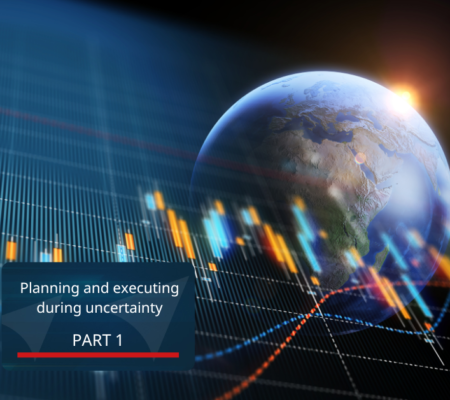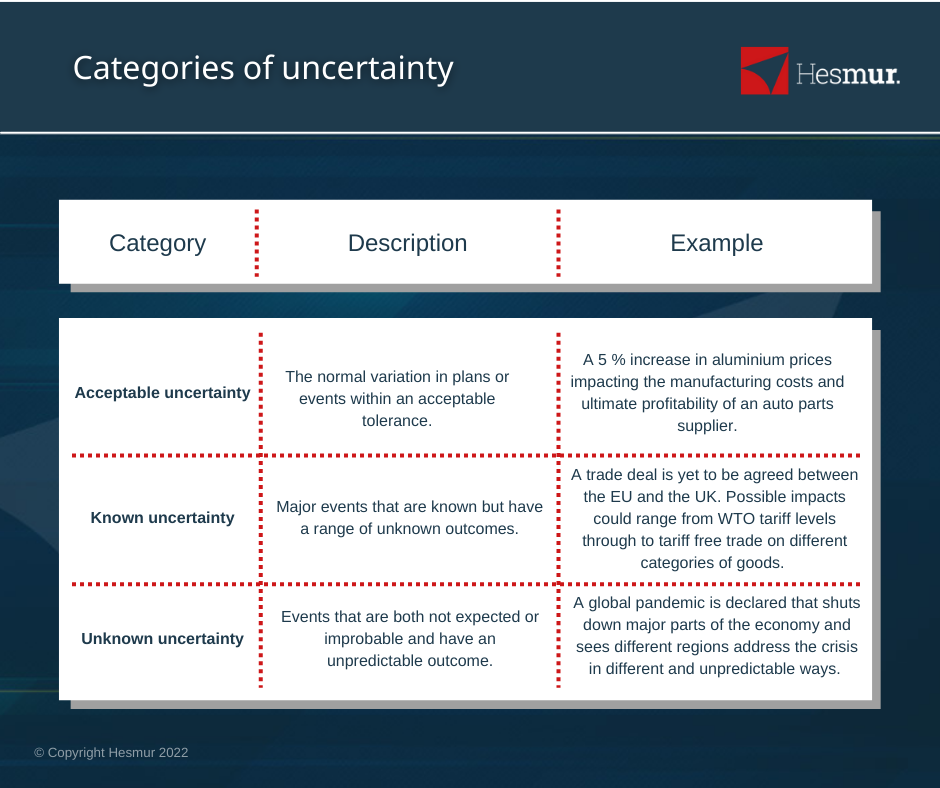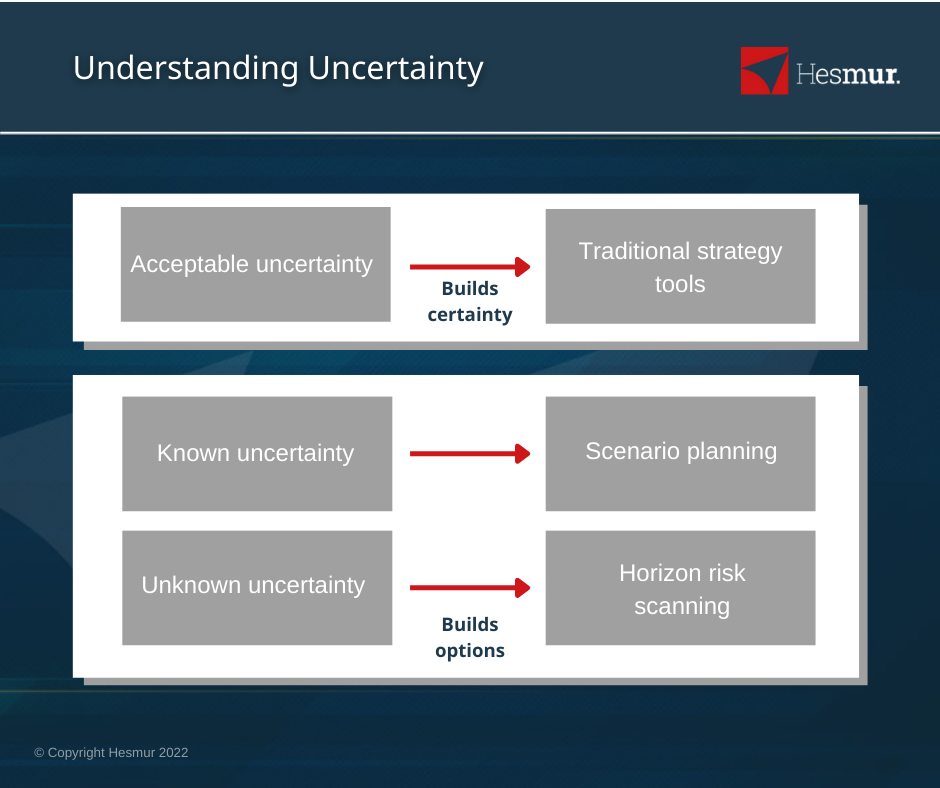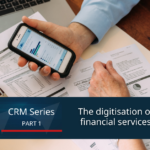Summary
The following three-part series is an update of work carried out at the beginning of the pandemic to understand tools and techniques firms can use to better manage during periods of uncertainty. With continuing geopolitical and economic uncertainty an expected theme of 2023, a refresh of our planning and managing in uncertainty primer might be useful as firms begin to chart the course ahead.
The three-part series explores key topics in planning and executing in periods of uncertainty, as well as providing a practical starting point when beginning your journey:
Part 1: Understanding uncertainty and the planning approaches available
Part 2: Delivering change in periods of uncertainty
Part 3: Practical questions to ask when planning and executing in uncertainty
What we can be certain about is uncertainty
Even before the pandemic, a number of sources pointed towards increasing levels of economic uncertainty over the last c. 20 yrs. The pandemic accelerated this trend exponentially. Geopolitical events, the lasting impacts of the pandemic and unwinding historic monetary policy approaches have served to continue this trend.
But, our research at the beginning of the pandemic showed that 70% of businesses had not taken basic steps to plan for periods of uncertainty. The crisis only intensified the issue. Driven by everything from a perceived lack of information and tools to organisational inertia and outright fear, it seemed many firms were not able to plan for, or more importantly, act to protect their businesses or take advantage of emerging opportunities[1].
While the pandemic impacted different sectors in dramatically different ways, the one common element was that firms who were able to understand the uncertainty and act (and react) decisively were more likely to out perform their peers.
Understanding uncertainty
In reviewing a host of academic writing and case studies on the topic of planning in uncertainty, three themes emerged. Each of which is important in understanding how to plan effectively in uncertainty.
1) Uncertainty isn’t binary[2]
In business, external environments aren’t either certain or uncertain, but instead are impacted by a wide range of variables with varying levels of uncertainty. And whilst planning in high levels of uncertainty can seem daunting, analysing that uncertainty at a more granular level can be a helpful place to start.
2) Uncertainty isn’t uniform
There is variety within uncertainty, each situation has its own unique characteristics. Ranging from acceptable variation in plans through to major unforeseen events, understanding the type of uncertainty you are facing is the first step in planning a way through it. These types of uncertainty can be broadly characterised as acceptable uncertainty, known uncertainty and unknown uncertainty.
3) Traditional strategy development doesn’t work in periods of uncertainty
Within traditional strategy development the goal is usually to increase the certainty around a particular outcome using extensive analysis and sophisticated tools. This is usually linear in its outlook and seeks to minimize uncertainty rather than embrace it. During times of low uncertainty, the rigor of this approach can be very useful, but in times when that level of the desired certainty can’t be obtained, it can grind decision making to a halt.
Armed with this understanding, firms can start to better grasp the uncertainty they are facing and begin to plot a course through it.
Planning tools
When planning in uncertainty, the objective is determining what you may be able to do about it and how you may mitigate risk, it is not about determining what will happen for certain.
Traditional strategy development tools focus on building certainty into plans and forecasts, where’s uncertainty planning tools aim to uncover what might happen, how it will impact the business and what you can do to prepare for various situations.
Used formally or more intuitively, the following more common approaches can be powerful tools in helping to identify future risks, assess your options and then develop your strategy. More on this and other tools that can be used to help navigate uncertainty will be discussed later in the series. Planning and execution during uncertainty – Part 2 / Planning and execution during uncertainty – Part 3
Scenario planning
Scenario planning can be used in times of uncertainty by developing different plausible representations of an organisation’s future (scenarios) based on assumptions about the known external forces at play [3]. In the current environment, this will likely include scenarios about the future global recession, the length of the period of economic downturn and the impact of extended political uncertainty and trade disruptions.
Horizon risk scanning
A systematic method known as horizon scanning can be used for spotting and analysing potential causes of uncertainty and ensuring adequate preparation in order to build resilience and exploit emerging opportunities. As with scenario planning, it isnt about predicting the future but, rather about preparing for possible outcomes [4].
Zero-based strategy development
A third popular decision-making method is zero-based thinking (ZBT) which is based on developing forward looking plans in isolation from legacy decisions or constraints. This method is particularly useful in planning for a future that is expected to be considerably different than past periods. While the much-echoed line of “if i had known this was coming I would have doubled down on digital” may not seem particularly helpful at this point, this thought process can be useful in establishing priorities and identifying “no regrets” actions.
Other tools for planning in uncertainty[5]:
Acceptable uncertainty – a few discrete outcomes: option value analysis, game theory, decision analysis.
Known uncertainty – a range of possible outcomes: scenario planning, disruption and innovation forecasting, latent demand research.
Unknown uncertainty – pattern recognition, non-linear dynamic models, discovery driven planning.
To mitigate this risk, many firms have adopted agile or discovery based approaches to better align decision making and investments horizons with different levels of uncertainty.
In part 2 of the planning and executing during uncertainty series, we offer advice on delivering change during times of uncertainty using various change methodologies. For more information on strategic planning and change management, visit Hesmur.com .
References
[1] Hesmur research strategic and business planning: insights on process and practices in prolonged uncertainty
[2] Strategy under uncertainty HBR, dec 1997, reference HBR, managing project uncertainty from variation to chaos, MTI Sloan Review 2002
[3] Kotler and Keller, 201
{4] Horizon scanning: a practitioners guide, IRM 2018
[5] Strategy under uncertainty, HBR, dec 1997
Contact us
Call: +442045742661
email: info@hesmur.com


























